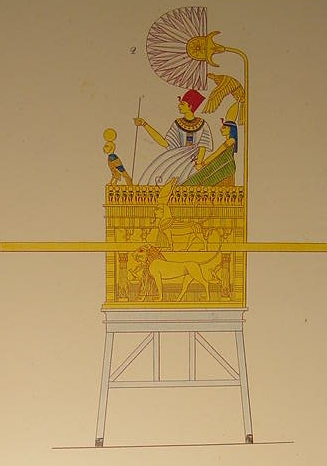Below, Pharaoh Horemheb, ca. 1321-1293 BCE, 18th Dynasty, on a portable throne, with a maned male lion sculpture as the throne's side arm. (p. 389. Heinrich Schafer & Walter Andrae. Die Kunst Des Alten Orients. [Dritte, Neubearbeitete Auflage. 11 und 12 Tausend. Im Propylaen. Verlag zu Berlin. 1925)
